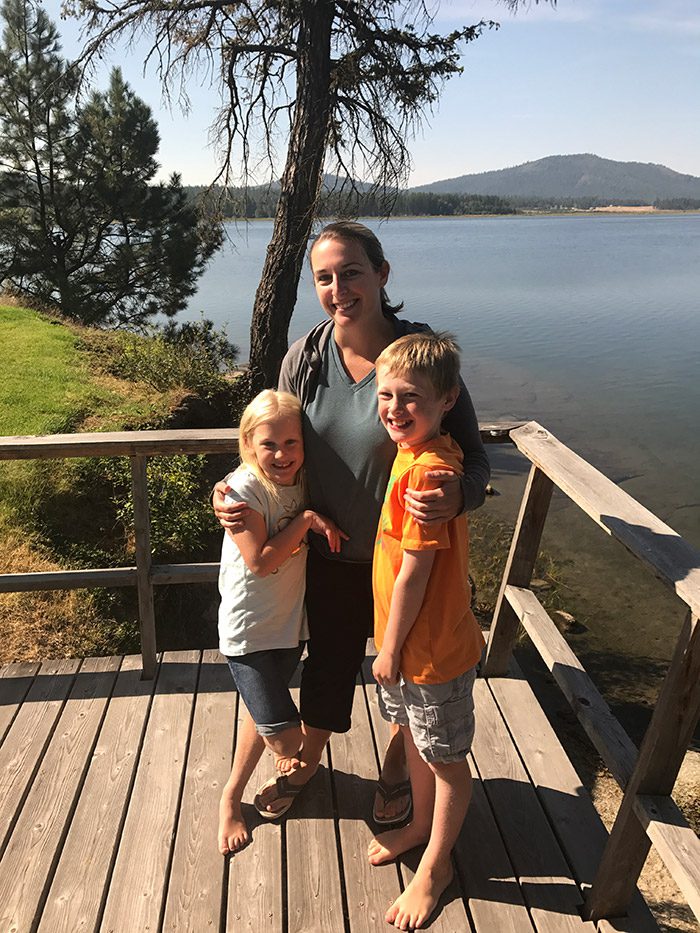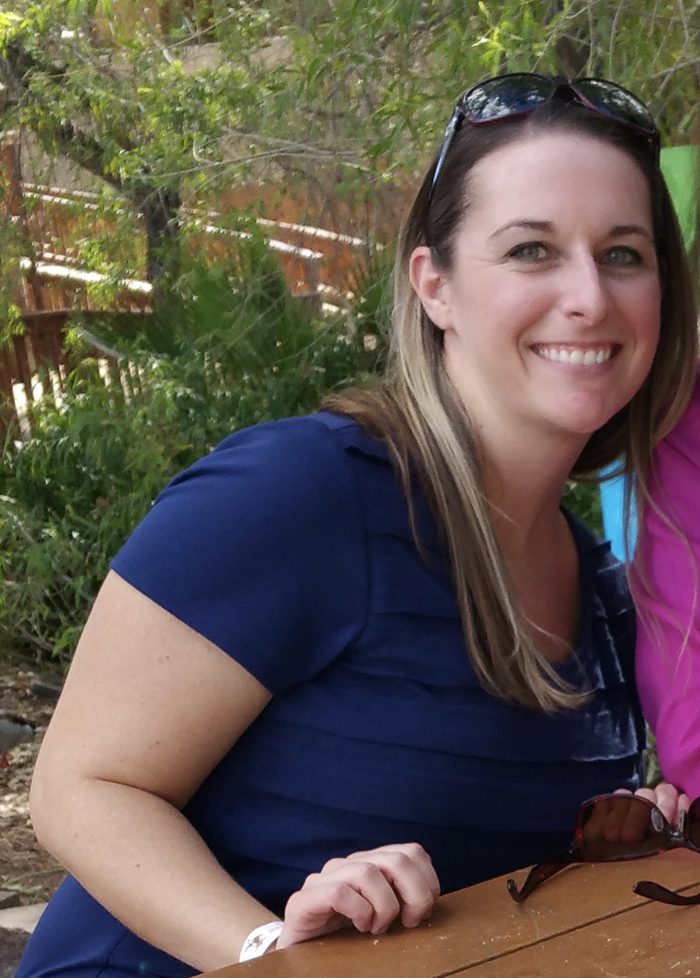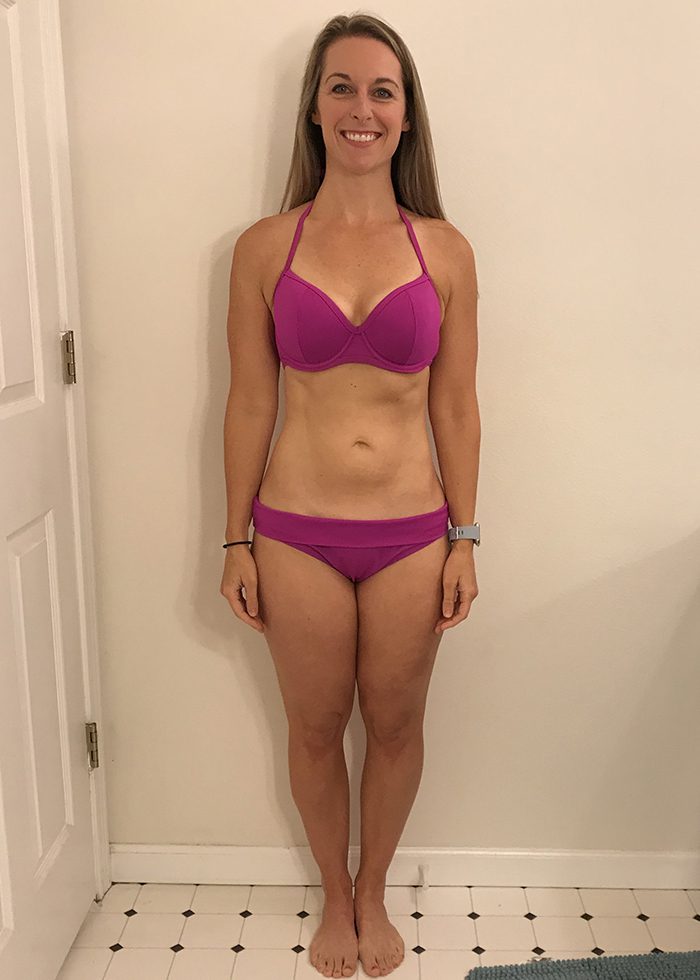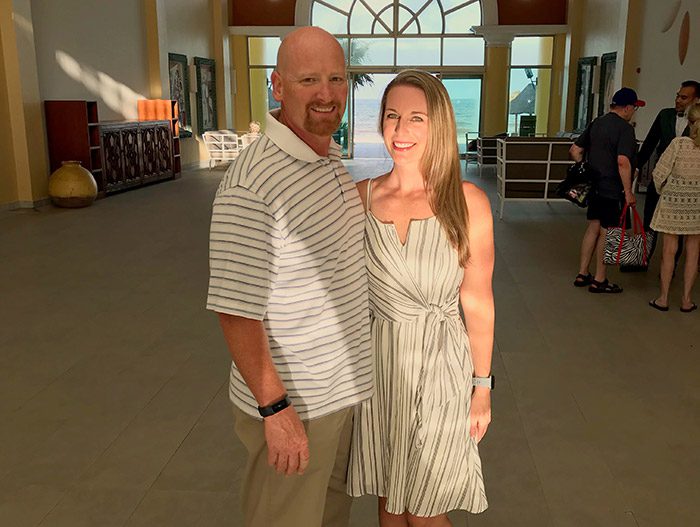Michelle Curtis wanted to make a change, but didn’t want to go on yet another extreme diet. Instead, she embraced a sustainable approach—and finally lost the weight, kept it off, and gained body confidence.
++++
Michelle Curtis was at the lake with family. Surrounded by nature, she was in her “favorite place in the world.”
And everything felt wrong.
Her knees hurt. Her clothes didn’t fit. She was hot. And her body? Family health issues, stress, and comfort eating had all helped to pile on the pounds.
At age 37, she was too heavy—and just plain uncomfortable.
“I thought, ‘If I keep living like this, I may not be able to hike at all next summer.’”

Michelle knew she had to find a way to get healthy, but she didn’t want to go on another diet. “Every woman I knew dieted. I just grew up in that culture,” says Michelle, who lives near Coeur d’Alene, Idaho.
She’d counted calories, held herself to strict macros, and restricted carbs. “I couldn’t go back to what I had done so many times before, which was go on a diet, have a list of good foods and bad foods, and white knuckle it until I got where I thought I wanted to be.”
Strict diets made Michelle feel miserable and deprived. And, if she was being honest, no matter how lean she got, she was never truly happy or at peace with her body.
She recalled sitting at a restaurant. As she looked around, she noticed the joy in people’s faces. They talked. They smiled. They laughed—and they enjoyed their meals. In contrast, she was picking at her salad and obsessing over how much exercise she was going to punish herself with the following day.
She didn’t understand how other people could find a way to enjoy themselves around food. “This time, I have to do it right,” she thought.
After all, it wasn’t just about her health and her body. It was also about someone else: her daughter.
Just a few years before, Michelle was gazing at her body in the mirror, mentally reviewing a never-ending list of ways her body could look better, when she noticed her three year old staring at her.
“She just looked at me with so much love,” Michelle recalls.
As she thought back to that moment, Michelle had an important realization: “I need to find a way to be at peace with my body, because my daughter is watching so carefully.”
Was it even possible to love her body and want to change it the same time?
When Michelle saw a social media post about Precision Nutrition, she was curious. The sustainable, practice-based approach seemed completely different from the short-term diets she’d tried in the past. She decided to take a chance and give Precision Nutrition Coaching a try.
Initially Michelle was surprised to learn that the program didn’t label foods as good or bad. And no one said “don’t eat this” or “stop overeating.”
“It took so much of the emotional weight off my shoulders,” Michelle says. It was as though, after years of diet overhauls, she could finally have some space to breathe. That allowed her to notice what was really going on inside.
“Before I started PN, my idea of emotional eating was the girl who breaks up with her boyfriend and is crying into a pint of ice cream. And that wasn’t me,” Michelle explains.
But one day Pam Ruhland, Michelle’s personal coach at PN, suggested Michelle try a practice called “notice and name.” It involves consciously observing and identifying what you’re feeling, thinking, and experiencing.
With Coach Pam’s guidance, Michelle applied the practice to her nutrition habits, and she began to recognize a pattern: When she was anxious, bored, or lonely, she would eat, and eat, and eat.
She was an emotional eater, after all.
(Learn how to use the “Notice and Name” technique at the end of this article.)
Michelle also adopted the core PN practice of eating slowly and mindfully. As her self-awareness grew, so did her ability to slow down and finally feel satisfied after a meal.
Through these new habits, Michelle began to acknowledge her stress. Instead of being so hard on herself, she practiced self-compassion. She understood that overeating was serving a purpose, and that was okay.
And without ever being told to stop overeating, she began to shift towards a healthier, calmer relationship to food… and herself.
“I’m there now. I finally feel comfortable in my body.”
By the end of her year with PN, Michelle had lost 25.5 pounds and was starting to feel at peace with her body. She’d grown so much that she wondered what it might be like to do the program again.
So she signed on for another round and, by year’s end, she’d lost another 13.5 pounds and had an even deeper sense of self-love and compassion.
Over her two years of coaching, Michelle lost 39 pounds.
Her biggest “wow moment” came recently, while on a vacation with her husband. Before heading to Mexico, Michelle looked back at the “Destination Postcard” exercise she’d done at the very beginning of her coaching journey. For the exercise, Michelle had envisioned how she wanted her future to look. Two years ago, that vision had included travel, paddle boarding, and waterskiing. It exemplified feeling healthy, strong, and confident.
While on vacation, Michelle looked around. There she was, on an adventure, feeling comfortable in a bikini, and experiencing a sense of peace.
During a recent a trip to Mexico, Michelle finally felt at home and at peace with her body.
Her vision was no longer her future. It was her present.
Now when Michelle gazes in the mirror, she feels good about the person she sees. She’s the role model she always wanted to be for her daughter.
“I want her to know that her value is not in how she looks—at all. Or the size of her body,” says Michelle. “I want her to eat well and exercise because it makes her feel good—and not for anyone else.”
Try It Now
“Notice and Name” helps you understand your deepest overeating triggers, says Coach Pam.
Here’s how to do it: Just before you eat—and especially between meal snacks, desserts, or second helpings—pause.
Then do the following:
Notice. Ask yourself: Why am I eating this? How does this benefit me? How do I feel (hungry, angry, lonely, tired, bored)? What will happen if I don’t eat this? What will happen if I do?
Name what you noticed. Based on what you noticed, name what’s actually going on. For example, “I’m not hungry. I just want more” or “I’m really angry and crunchy food makes me feel better.”
Keep using this process whenever you feel driven to eat based on emotions.
Our Precision Nutrition coaches use this worksheet with clients to help them keep track of what they notice. Go ahead and print it out. Then whenever you find yourself eating to soothe emotions, grab the sheet and fill it out. There’s no need to analyze or judge what just happened. Just gather data by describing your experience. (That’s your only task right now.)
Once you’ve filled out the sheet two or three times, however, take a look at your responses. See if you can spot any trends.
For example, based on what you’ve written, you may notice that your eating is linked to a specific time, place, thought, feeling, type of food, situation, or person. As you begin to understand the true reason you’re reaching for food, look for ways to break the cycle. For example, could you:
- Book another activity during the time you usually feel driven to snack?
- Change your habits so you avoid walking through triggering areas (such as the kitchen or break room)?
- Find non-food ways to deal with emotions? For example, could you solve boredom by playing a game or taking a walk?
Keep in mind that very small changes often can be quite meaningful. Even just entering your house through the front door instead of the back may be all you need to break your cycle of raiding the snack cabinet when you get home.
The technique is deceptively simple, but the power comes from “naming,” says Coach Pam. “Often the answers aren’t what you expect.”
Want help becoming the healthiest, fittest, strongest version of you?
Most people know that regular movement, eating well, sleep, and stress management are important for looking and feeling better. Yet they need help applying that knowledge in the context of their busy, sometimes stressful lives.
Over the past the past two decades, we’ve used the Precision Nutrition Coaching method to help over 150,000 clients lose fat, get stronger, and improve their physical and mental health… for the long-term… no matter what challenges they’re dealing with.
It’s also why we work with health, fitness, and wellness professionals (through our Level 1 and Level 2 Certification programs) to teach them how to coach their own clients through the same challenges.





Share